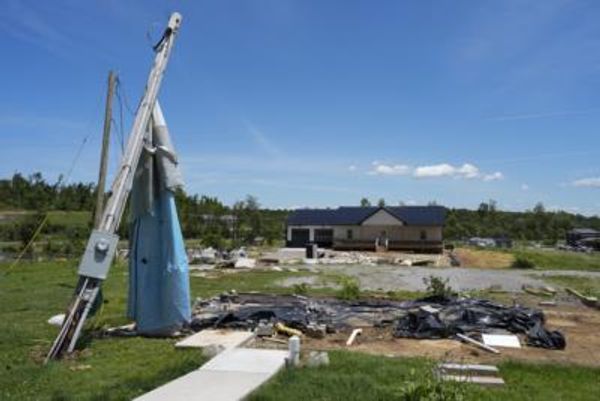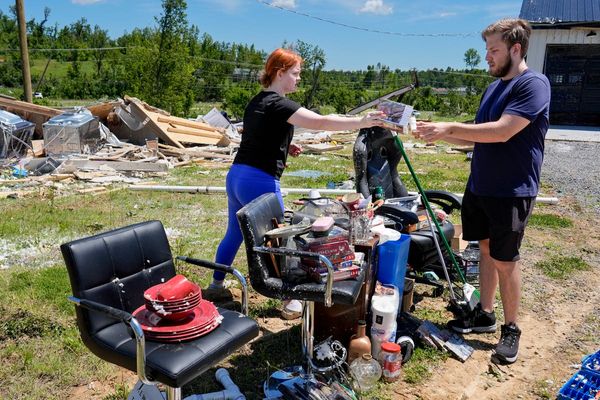
This is part six in a series. For the rest of the series, go here.
More women who underwent treatment at the Esther Foundation have come forward with first-hand accounts of religion-based abuse during their years as residents of the Pentecostal-linked facility which has received millions of dollars in grants from the Morrison government.
The former residents, who as teenagers were in rehab for addiction and mental health issues, have raised disturbing new allegations including:
- Residents were told to “pray the demons” out of themselves, rather than receive professional psychiatric care. They were also told to “pray the pain away”, rather than be given pain medication
- They were subjected to a form of exorcism which, on one account, ended with residents speaking in tongues to rid a teenage girl of the devil, as another resident read from a Bible
- Residents who gave trouble might be kept locked in a room for hours
- A senior Esther figure known as “Prophet Caren” was said to hear messages direct from God and convey these to individual girls
- Residents were told they would be hunted by “sexual spirits” and raped in the outside world if they left the Esther facility.
The allegations come on top of claims made last week by former resident Lydia Taylor, a young Indigenous woman who told Crikey that Esther staff attempted to drive out “Aboriginal demons” from her.
Taylor broke a decades-long silence around Esther House, the facility operated by the Esther Foundation. Her allegations have prompted others to go on the record.
In the case of the Esther Foundation that’s a particularly difficult decision. Esther’s founder, Patricia Lavater, has been widely honoured for her work in rehabilitating young women. She has a formidable network of church, business and political supporters and a devoted following of young Christian women coming to her defence.
For all that, some of the strongest criticism of Esther House comes from someone once closest to Lavater.
Bonnie, who wanted Crikey to only use her first name, was raised in Esther House from the age of five, the daughter of a heroin-addicted mother who moved in and out of Esther House after meeting Lavater through the church. Lavater became godmother to Bonnie and had Bonnie live in her home rather than in the house for residents.
Bonnie says she was grateful to Lavater for helping her mother and that Lavater had helped many people — but there was “a lot of stuff” she didn’t agree with.
“Esther House was 100% about control,” she says. “Patricia and [husband] Rod ran the shop. So it’s hard. Patricia herself is a beautiful person with a huge heart. But Esther House is a whole other thing.
“The way things were done was wrong — not appropriate. I have said for a very long time that I have wanted to speak about it because it’s disgusting the way the girls were treated.
“If you were gay they would give you exorcisms until there was no lesbian in you. And it was hard-core praying and Bible bashing until you were on the floor, on your knees screaming.
“I was locked in the office once and made to read a Bible for six hours, all because of something to do with chocolate, I don’t know. But apparently the wrong thing.”

For Bonnie the final straw came when Lavater refused to allow her to leave Esther House to see her mother when her mother was diagnosed with cancer and had been given a short time to live.
“A 16-year-old girl being told your mum’s got cancer and you can’t see her? Well, what’s that?” she says.
Bonnie ran away and never went back. Fifteen years on she remains deeply conflicted about Lavater, who she thinks of as “a Christian type of hippie” but who was a different person when it came to God and running Esther House. Then it became all about control and Lavater’s beliefs.
“You’re not allowed to have another belief,” she says. “It’s their belief, nobody else’s belief. It’s like smashing it in your face. Even when they did church, you weren’t allowed to sit down, you had to stand up. There was no sitting down at all.”
Bonnie’s mixed feelings are similar to those of other women Crikey has spoken to.
The unifying thought, though, is that the truth must be told of what happened behind the walls of Esther House. For some it is about being believed and coming to terms with the trauma they say they have lived with from their time there.
Some want Esther closed completely, regardless of management and staff changes which saw the departure of Lavater in 2020 as former residents approached Western Australian police with their stories.
But it is also about making sure that rehabilitation for those with mental health and addiction problems is not again left in the hands of people who believe the answers lie in the Bible and who are supported by politicians and other public figures keen to bask in the glow of lives — apparently — being turned around.
Responding to the new allegations before publication, Patricia Lavater said she “deeply” apologised “for any hurt or trauma caused to any individuals”.
As we continue our series we will publish more first-hand accounts and seek answers from state and federal authorities on how the Esther phenomenon prospered for so long.
Next: Claire Crawford and how she escaped from Esther House.







